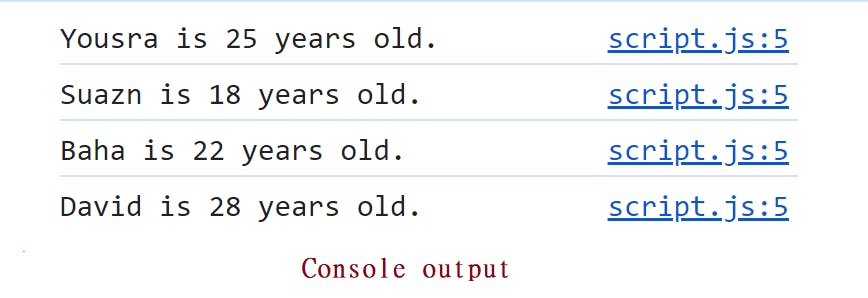A "for" loop in JavaScript is a control flow statement that allows developers to repeatedly execute a block of code as long as a specified condition remains true. It simplifies the process of iterating over sequences, such as arrays or other iterable objects.
🤎 The Basics of the "For" Loop:
The main components of the "for" loop:
for (initialization; condition; update) {
// code to be executed in each iteration
}
Initialization: This is where you declare and initialize a variable that acts as a counter. It is typically used to set the starting point of your loop and executed only once at the beginning of the loop.
Condition: The loop continues executing as long as this condition evaluates to true. If the condition becomes false, the loop terminates.
Update: This part is responsible for updating the loop variable. It is executed after each iteration, just before re-evaluating the condition. It often increments or decrements the loop variable.
Code Block: The block of code inside the curly braces
{}is what gets executed in each iteration of the loop.
Examples:
🤎 In this example we'll count and print numbers using a "for" loop:
for (let i = 0; i <= 4; i++) {
console.log(i);
}
This loop initializes i to 0, prints the value of i in each iteration, and increments i by 1 until it reaches 4.

Note: You can also loop backwards:
// Loop to print numbers from 4 to 0
for (let i = 4; i >= 0; i--) {
console.log(i);
}
/* output :
4
3
2
1
0 */
🤎 In the next example, the "for" loop iterates over an array of names:
const names = ["Yousra", "Suazn", "Baha", "David"];
for (let i = 0; i < names.length; i++) {
console.log(`Hello, ${names[i]}`);
}
In this example, the loop initializes i to 0, prints each name in the array, and increments i until it reaches the length of the array.

🤎 Let's create a more dynamic example by using both numbers and names:
const ages = [25, 18, 22, 28];
const names = ["Yousra", "Suazn", "Baha", "David"];
for (let i = 0; i < names.length; i++) {
console.log(`${names[i]} is ${ages[i]} years old.`);
}
Here, we have two arrays, ages and names, and the loop combines the corresponding name and age to form a sentence for each person.

🤎 Nested For Loops:
Nested for loops are useful for tasks that involve multiple levels of iteration:
const familyMembers = [
["Yousra", "Baha"],
["Lulu", "Kamal"],
["David", "Henry"],
];
// Nested loops to iterate through the array
for (let i = 0; i < familyMembers.length; i++) {
console.log(`Family ${i + 1}:`);
for (let j = 0; j < familyMembers[i].length; j++) {
console.log(` ${familyMembers[i][j]}`);
}
}
In this example, the outer loop for (let i = 0; i < familyMembers.length; i++) iterates over the rows of the array, where each row represents a family. Within the outer loop, there is a nested loop for (let j = 0; j < familyMembers[i].length; j++) that iterates over the columns of each row. This inner loop prints the names of family members within the current family.

🤎 Notes:
◾ Be Mindful of Infinite Loops: Ensure that the loop condition can eventually become false to prevent infinite loops. Debugging infinite loops can be challenging.
◾ Consider Functional Alternatives: In modern JavaScript, functions like forEach, map, and filter provides concise alternatives to traditional "for" loops for specific use cases. Choose the appropriate tool for the task.
🤎 Conclusion
The "for" loop is a powerful and essential tool that provides a concise and organized way to handle repetitive tasks in JavaScript, making it crucial for various programming scenarios.
